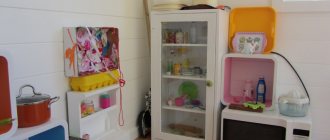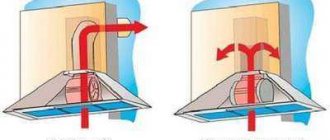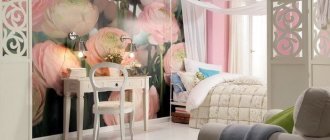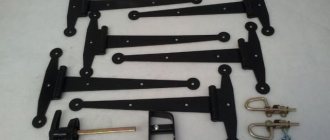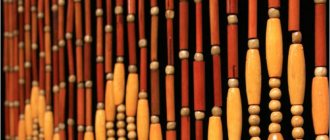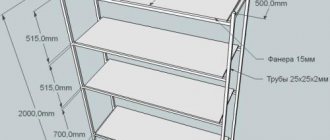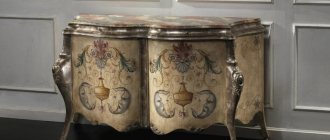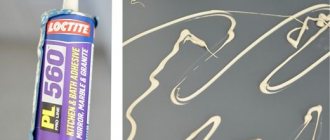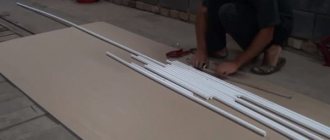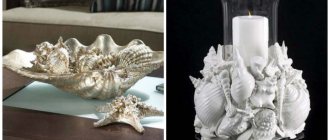Each owner of his own plot tries to improve the territory in the most comfortable way. For this, various architectural forms are used, a variety of which are canopies in the courtyard of a private house, photos of which confirm the fact that, in addition to their main functions, canopies can become a real highlight of the local area. They are a unique attribute of coziness and comfort, allowing you not to postpone planned events due to the vagaries of the weather. Thanks to the availability of a large selection of high-quality materials on the market, and with a little imagination, you can build the most elegant and beautiful canopy in the courtyard of a private house (the photos below show some interesting ideas for using such structures in the landscape design of the area near the house). Next, we’ll talk about the types of canopies and how to arrange them.
Canopies in the courtyard of a private house: photos of structures depending on the area of application
Canopies are, first of all, structures designed to protect a particular area from precipitation (whether snow or rain), hot sun rays or falling leaves. Therefore, they place a canopy in the courtyard of a private house, mainly over recreation areas and the most “passable” areas.
Canopy in the form of a “visor”
We can say that a canopy over the entrance is mandatory - it protects not only from rain, but plays the role of a kind of protection against wet snow sticking to the steps and thresholds, which can lead to falls and injuries. There is another variety - a canopy extension over the terrace, with one side fixed to the wall, under which comfortable furniture, a barbecue and other attributes of a comfortable stay can be located. As a rule, shelters over the porch are made in the same style as the main building, using appropriate materials and colors. For example, for a house made of timber, a wooden structure with the possible use of forged elements is suitable.
Shed-extension
You can implement a canopy in the yard to protect the area from the entrance to the gate or outbuildings. Such structures have quite large dimensions and, for the most part, are an extension canopy, one side of which is attached directly to the wall of the house, and the other is supported on supports. Their undoubted advantage is that you can freely move along the paths at any time of the year, and in winter you do not have to clear them of snow. They can also be stationary (with supports on all sides) or mixed type.
In this case, it is better to construct closed canopies in the courtyard of a private house - the photos clearly demonstrate the advantage of “greenhouse” type structures.
You can use sliding elements, with which you can open the mobile sections in hot weather and close them securely in windy weather.
gazebo canopy
This version of the canopy is a favorite structure for summer residents and owners of country houses. Gazebos can be of various shapes: round, square, polyhedron-shaped, as well as open (the design involves the presence of supports and a roof) or semi-closed type (there are side walls). Such buildings are usually located in the greenest, picturesque areas of the site on hills.
Canopy over the playground
A canopy over a children's playground is a fairly popular design for families. Even in the worst weather, it is very difficult to keep a child in the house, so a canopy located above the swing, sandbox and horizontal bars will be a good help for the child and his parents. In addition, the canopy will protect the wooden elements of the site from precipitation and extend their service life.
Canopy to the yard to protect the car
A carport will definitely become indispensable for owners of small plots where there is virtually no free space to build a garage. Carports in the courtyard of a private house (the photo shows their various options) can also serve in the event of guests arriving, who, undoubtedly, will be more comfortable seeing their car on the site, and not outside it. Among other things, installing such a canopy will require significantly lower financial costs than building a garage.
What to make a canopy for the yard from?
Canopies of any functional type have a completely simple design, the main elements of which are supports, frame and roof. In order to choose materials, you should first decide on the style - a canopy in the courtyard of a private house must correspond to the overall landscape design of the area.
The materials for the supports can be steel pipes, wooden beams, as well as posts made of brick. The frame, in most cases, is made of metal profiles or wood. The same material that covers the main buildings is often used to make the roof. Corrugated sheeting, plastic, metal tiles and soft types of materials are also well suited, among which polycarbonate stands out (due to its combination of strength and flexibility). Let's look at some of the most used options.
Sheds made of corrugated sheets in the courtyard of a private house: photos of bold ideas
Corrugated sheeting is considered an ideal option for roofing - this is explained by many indicators. Among these are the following: ease of installation, which is not particularly complicated (this applies to a greater extent to craftsmen who build canopies in the courtyard of a private house with their own hands); relative cheapness (especially if it is thin); high density, preventing furniture or car from fading; durability; practicality and unique compatibility with any materials used in the construction of the structure.
Depending on the type of construction and the amount of material required, sheds made of corrugated sheets in the courtyard of a private house (photos show various interpretations) can be arched, single-pitch or gable. The structure in the form of an arch looks much more interesting than a simple lean-to, but its construction will require a lot of experience, since it is quite complex. A gable canopy is used less frequently and is used mainly to equip the roof of an open summer kitchen.
Canopies made of metal profiles
The advantage of architectural forms made from metal profiles lies, first of all, in the visual lightness of the structure built with its help, which will easily fit into any design project for arranging the local area. In addition, metal profiles are a reliable and durable material that, with proper care, can last for quite a long time. Proper care, in this case, means timely treatment of it with anti-corrosion compounds or special paints containing them.
Sheds made of metal profiles in the courtyard of a private house (photos show various types of structures - from primitive to more complex) are used for various purposes. They can protect a recreation area, a car parking lot, or an open summer kitchen, without creating any visible clutter in the space.
Wooden canopies in the courtyard of a private house: photos of beautiful options
Wooden structures are gaining more popularity over the years, since, regardless of the style of the main buildings, they easily fit into the natural landscape, becoming a part of the landscape. A wooden canopy in the courtyard of a private house can be used for a variety of purposes, and can also be stationary or attached to the wall of the main building.
It should be noted that wood is a material that can be easily processed, from which you can create the most bizarre shapes. Wooden sheds are built from logs or timber. Experts advise using beams measuring 90 by 90 mm for support, and further strengthening the supporting beam for strength. It is worth remembering that the wood must be treated with special solutions that protect against rotting and various insects.
Wooden canopies in the courtyard of a private house, as seen in the photo, can be decorated with carvings, figured pillars or point balusters. The main thing is to know moderation in everything and not to overdo it, so that it doesn’t turn out to be absurd.
Reliable, ergonomic and aesthetically attractive polycarbonate canopies allow you to make the most of the area in front of your private home. The building makes it possible to comfortably spend your free time both during bad and hot weather.
A polycarbonate canopy attached to the house will protect you from bad weather surprises
In order for it to fit perfectly into the overall stylistic design of the site, you should carefully consider the location and type of construction.
Do-it-yourself canopies for a summer residence: views in photos and videos
A strong and warm house shelters its owners in any bad weather, but, as a rule, when choosing a rural area for permanent residence or summer vacation, a person dreams of spending a lot of time outside. In recent decades, the weather has become especially capricious, and in rainy or dry summers it is not very pleasant to be outdoors. A simple solution allows you to cope with this problem - garden sheds. How to make a canopy - read this article.
Application area of canopies
Garden awnings have many functional uses:
- Shade canopy. The name itself already indicates that such a structure is intended to create shady terraces. The shade canopy will also protect from rain. This type of buildings includes canopies, awnings, canopies over a gazebo, children's playground, roofs of terraces and gazebos, and a canopy over the main entrance to the house.
- Carport. A seasonal stay at the dacha does not require the construction of a major garage, but leaving the car in the rain and sun is not very pleasant. An excellent solution is a carport, which does not require significant costs, but at the same time fully copes with its assigned role. Carports are also popular among permanent rural residents, since many of them rightfully believe that temperature changes during garage storage of a car contribute to increased corrosion of the metal. A carport attached to the house will protect it from rain, wind and snow, and will allow you to avoid spending extra money on capital construction.
- Shed for firewood. The expansion of gasification in the country has made it possible for many rural residents to live comfortably, but gas is rarely available in dacha cooperatives. However, you want to barbecue, celebrate a holiday or bask in a bathhouse not only in the warm season, but also in the autumn abyss and winter frost. Therefore, almost all land owners have a supply of firewood at their dacha. Anyone who has tried to start a fire using wet wood understands the need to protect it from weather dampness.
- A canopy for grilling and barbecuing will allow you to spend your planned vacation, despite weather obstacles.
- Canopy over the porch. A necessary thing in bad weather, which will allow the steps to remain dry and clean, and will prevent slipping in the winter. Also, a canopy over the entrance to the house will allow you to leave your garden shoes outside without fear of rain getting them wet at night.
They can be a separate building or adjacent to other buildings (house, bathhouse, barn).
How to make a freestanding canopy
Let's look at the stages of building a free-standing shed.
- Drawings and project. This stage of work is the most important, since an unsuccessful project, as well as its absence, will result in a waste of money and effort on the construction of a non-functional structure. If you do not have special skills, it is better to order a ready-made project from specialists or carefully study the rules for constructing canopies.
Scheme of a canopy made of pipes and polycarbonate
- Preparatory work. Includes preparation of the area. The area is cleared of foreign objects and debris; the area under the canopy requires flooring, which depends on the functional use of the building. A carport requires paving with high-strength paving slabs or creating a concrete screed. A shade canopy in the recreation area can also be arranged over a paved area or the flooring can be made of natural stone or wood. A firewood shed can be built over a wood or concrete floor. Typically, the floor covering is arranged in such a way that it rises above the ground by several (five to ten) centimeters.
- Construction of support pillars. The pillars are dug into the ground fifty to sixty centimeters. The evenness and symmetry of the structure is best assessed using a building level. The pillars are reinforced with crushed stone and construction mesh, then concreted. If you plan to use a cylindrical column to support the canopy, it must be erected before laying the floor covering.
- Frame. Construction of the frame begins after the time required for the concrete screeds to harden at the base of the support pillars: after three to four days. Installation begins with the installation of horizontal ceilings along the perimeter of the canopy, connecting the installed supports to each other. Then, additional transverse beams are installed along the width of the roof, at a distance of approximately seventy centimeters from each other. The same support beams are installed along the length at a distance of a meter between them.
- Roofing. They are carried out in accordance with the recommendations for working with the selected roofing material.
How to make a canopy as an extension to the main building
It is best to plan a canopy for the house during the main construction stage. In this case, the finished house project will allow you to harmoniously fit the architectural element of covered terraces into the overall appearance of the building: a canopy over the porch, a carport, a canopy for an open veranda or creating terraces. The finished project will provide the necessary functional performance: tilt, water drainage, lighting in the house, and so on.
But if the decision to add a canopy came during the operation of an already finished house, then it is also worth ordering a project from specialists or developing it yourself, considering the outflow of water and snow, lighting and possible communications.
The easiest way is to attach wooden canopies to your house with your own hands: it is easier to work with wood, so it will be easier to realize what you want.
Materials used for roofing canopies: advantages and disadvantages
The roof is important in creating the structure. It is made from various materials (corrugated sheets, metal tiles, polycarbonate, wood, fabric and even straw). In principle, any roofing material will be suitable for creating a canopy. When choosing a material for a roof, one usually takes into account its compatibility with other buildings on the territory (the material can repeat the material of the roof of a house, gazebo, barn and bathhouse). However, it is also worth considering the cost, weight and other characteristics of the material.
Polycarbonate
Polycarbonate canopies are the most popular type nowadays. Polycarbonate is a strong, durable material that is lightweight and easy to install. Also, the advantages of the material include a large selection of colors. Making a polycarbonate canopy with your own hands is an easy task even for a person who does not have special skills.
A polycarbonate canopy has another advantage. If the structure does not have side walls, then snow and rain will inevitably be blown in by side winds. Polycarbonate, as a rule, is a transparent material that will allow the sun's rays to penetrate, which will prevent the formation of dampness under the canopy, and in the spring the snow will quickly disappear from the covering of such terraces.
Polycarbonate allows you to quickly make a carport, as well as make awnings over the entrance to a house or a canopy over the porch to a bathhouse.
The disadvantages of the material include the fact that, while transmitting sunlight, it will not create the desired shade and coolness. The material does not differ in fire resistance, therefore, you cannot make a polycarbonate canopy for a barbecue grill or a gazebo with a barbecue with your own hands.
From corrugated sheets
Such a roof will be an excellent completion of both metal and wooden structures. The advantage of corrugated sheets is the speed and ease of installation.
Corrugated sheets are lightweight, but can withstand significant loads of snow and wind.
A roof made of corrugated sheets is perfect for any type of shed and will fit into any design, such as an attached shed to a house, a carport, a canopy over a porch or a shed for firewood. The use of corrugated sheeting will create the necessary shade and ensure fire safety.
Frame material
Most often the frame is made of metal profiles or wood. Forged awnings are a beautiful architectural solution, but performing such work requires special skills. You can order ready-made forged frames for terraces from specialists. Beautiful forged structures are made in Kirov.
A frame made of metal profiles is more practical than a wooden one. It will serve for a long time without being damaged.
The use of metal profiles is also better from the point of view of fire safety, therefore the use of metal profiles is recommended when installing canopies on the territory of gazebos and terraces with barbecues or other braziers.
Making canopies for a specific purpose
For auto
Often the carport is made of metal profiles. The roofing covering is selected taking into account the rest of the yard buildings. The carport is covered with corrugated sheets, metal tiles and polycarbonate.
Carports are made according to the general principle of creating carports. When creating a carport, special attention must be paid to the floor covering, as it must support the weight of the car. The flooring of the carport should be made of concrete or special paving slabs, taking into account the increased load. When starting to make a carport with your own hands, you must also consider how many cars will be under the roof. The space for one car should exceed its length by about a meter and its width by two meters.
A carport can be a separate building unit, but a carport can also be an extension of the garage. A garage with a canopy is a good option for people who permanently live in a private home.
Also, a carport can be included in the overall design of the house. You can develop an attached shed project even after the construction of the house is completed.
Shade canopy
When creating such a canopy, its main role in creating shade is taken into account, therefore the material from which the roof is planned to be made must be opaque. A good option is to make a roof from corrugated sheets or metal tiles. The frame of shady terraces can be either wooden or made of metal profiles. Design techniques allow you to make a shady canopy from straw and other materials.
Stores offer a huge selection of ready-made textile canopies, both as free-standing elements (tents) and adjacent to the main structure (awnings). Fabric options have a number of disadvantages: they have low stability and resistance to wind and heavy rain. However, a number of advantages still force many summer residents to choose them:
- ease of installation,
- the ability to move the canopy around the site,
- low cost,
- do not require construction work.
Grill and barbecue shelter
The barbecue canopy can be a separate structure, or it can be a common roof for a gazebo with a brazier. The main requirement when choosing a coating in this case is fire safety. The best option is metal canopies coated with metal profiles or tiles. You should also not install a wooden floor on the terrace area with barbecue.
Firewood shed
As a rule, a firewood shed is an extension to a barn and shares a roof with it. Using a polycarbonate roof will allow the firewood to quickly dry out moisture in the spring.
Canopies canopies for the house
Having decided to attach a canopy to the house, it is necessary to use a preliminary design, since an ill-conceived extension can harm the main structure: significantly reduce the natural light in the house, allow moisture to get under the foundation or roof. The material for the roof of the canopy can be corrugated sheeting or polycarbonate; you can also use the same material that covers the main roof of the house. As you can see, today there are a huge number of types of canopies.
Author: S. Rozanova
A few words about the material...
Polycarbonate, which underlies the canopy, is a versatile material used to implement various design ideas. Due to its unique properties, it is often used in the following cases:
- to create canopies over swimming pools,
- visors attached to the house,
- when arranging verandas.
Polycarbonate has a number of advantages. The most important advantage is a high level of reliability and strength. Excellent resistance to the negative effects of destructive ultraviolet rays, mechanical damage and other negative factors.
Large sheds attached to the house, photo of a practical, arched design
These qualities determine its long service life. For quite a long time, polycarbonate canopies will retain their original performance and quality characteristics.
Another advantage is that polycarbonate does not require additional maintenance. It is enough to periodically clean the surface with a damp sponge dipped in soapy water.
Polycarbonate is a universal material that has an excellent appearance. If you install it on the territory as a canopy over the porch or a canopy for the veranda, then the building will acquire additional attractiveness.
Types of polycarbonate
Before you start designing a canopy, the question arises about choosing the type of polycarbonate. In order to give the correct answer to this question, you must first decide on the functional purpose of the future structure.
Owners of private houses who want to install a beautiful and elegant canopy over the central entrance to the house on their property can turn their attention to corrugated polymer.
Corrugated polycarbonate for visors
If there is a need for a high level of light transmission, you can choose monolithic polycarbonate.
Monolithic polycarbonate
Plants in pots can be installed under polycarbonate canopies attached to the house. They will be reliably protected from the negative effects of scorching sun rays and rain.
Photo of an original and comfortable canopy
Those wishing to install a durable and reliable canopy should pay attention to cellular polycarbonate. This material can easily cope with heavy loads.
Cellular polycarbonate
Preparatory stage
To make a strong and durable carport attached to a house or a permanent structure, it is important to prepare the necessary tools and materials. First of all, we mark out the place for the future structure - for this, a machine is installed in the construction area, and places for supporting elements are outlined. It is imperative to check that the supporting elements do not interfere with installing the car and opening the doors.
Usually the roof is longer than the canopy. It can extend beyond its perimeter by 50-100 cm, this is considered normal.
If polycarbonate carports are planned, the drawings will be the most important stage of construction. They are the ones who will help you do everything correctly and exactly according to the given parameters. You can make the drawings yourself or find them ready-made on the Internet.
When making it yourself, it is recommended to draw the planned structure on paper in several projections - from above and from the side. It is important to correctly calculate the required amount of material. It is advisable to add 10%, this will eliminate the need to purchase additional funds for construction.
For the frame, you can use a steel pipe or a wooden beam, it all depends on the desire of the owner. But if a tree is chosen, it will definitely need to be treated with special protective coatings.
Carports are manufactured using tools and materials from the following list:
- saw;
- hammer;
- if a canopy is being built from timber, then nails will be needed to secure it;
- to work with a profiled pipe you will need a grinder and a welding machine;
- level;
- plumb line;
- pegs;
- twine, any strong rope or cord will do;
- shovel;
- clamps;
- Self-tapping screws will be needed for fixing and fastening;
- screwdriver
Advantages of polycarbonate canopies
The aesthetically attractive appearance of the products allows them to look great both in a summer cottage and in any other place. Due to the fact that the canopies have a very simple design, a lot of time and effort will not be spent on their manufacture.
Drawing of a canopy made of cellular polycarbonate
On the Internet, anyone can find drawings of canopies, as well as photos of them in the country.
Manufacturers of canopies select a thickness for the product that will easily withstand precipitation typical for certain climatic zones. The production process is reminiscent of assembling a construction set.
Assembling a polycarbonate canopy
This procedure does not take much time and effort from workers.
If we list all the advantages that canopies for a private house made of corrugated sheets have, then it is worth noting their affordable cost.
Prices for canopies - 3 thousand rubles per meter
After conducting a simple comparative analysis, we can conclude that it is more profitable to purchase polycarbonate products than canopies made from other materials. Affordable low prices, especially if you purchase a canopy on sale, will allow you to get excellent results and save a little.
Beautiful visor at a low price
Today, as part of the promotion, you can order a turnkey polycarbonate canopy 3.6 by 6.3 - 63,000 rubles! Shed 5.7 by 6.3 turnkey - 128,000 rubles! The installation is valid in Moscow, the Moscow region and nearby regions.
Inexpensive canopy for a private home
If such a need arises, a polycarbonate canopy can be easily dismantled and installed in another location. There will be no traces of dismantling left on the product.
Types of canopies
Functional polycarbonate canopy at an affordable price
The modern domestic market offers a wide range of canopies, which can be divided into several categories:
- Awnings fixed with capital bases.
- Visors on consoles.
- Canopies for a private house made of corrugated sheets.
An important feature of canopies is that they can be of any length. This means that such a structure can be installed along the entire facade of the house without additional joints. As for width, there are limitations. It cannot exceed a mark of several meters. This limitation is not accidental. It is designed to ensure safe operation of the product. The maximum width of two meters allows specialists to safely attach the canopy to the wall so that it will not be blown away by the wind.
The main task of the canopy is to provide reliable protection for its owners from precipitation and sunlight. If you complement the polycarbonate canopy with forged elements, the product will acquire an original look.
Polycarbonate canopy with forging
The main purpose of polycarbonate visors
Polycarbonate canopy for barbecue area
The main tasks solved with the help of canopies:
- Organization of space for a comfortable summer holiday.
- Installation of an awning for a barbecue area.
- Entrance equipment providing reliable protection from precipitation.
- Placement of vehicles.
Polycarbonate is a modern material that is great for creating roofs of different levels. With its help, you can build both a single-pitch and a gable roof. It can be made in the form of an arch, a pyramid, concave and convex. If such a need arises, the home owner can easily change the color of the canopy by covering it with tinted film.
Selection of material for supports
Today, there are about three options that are used when organizing sheds.
Photo of a beautiful polycarbonate visor
When choosing a suitable canopy, you should pay attention to its thickness. It should be such that the visor can withstand a variety of loads in the future. At the same time, you need to take into account the type, as well as the functional purpose of the canopy. If it has a sloped shape, then the thickness of the polycarbonate may be slightly less.
It is best to give preference to material with a protective film. It greatly increases the level of strength and reliability of the structure. The presence of expansion gaps in the future may lead to cracks on the surface of the visor.
You should work with polycarbonate with special care. Otherwise, it can be damaged during the installation stage.
Having a detailed drawing allows you to avoid the possibility of various errors in the future.
Polycarbonate carport
If the entire work process is completed correctly, then such a canopy will serve its owners for decades. Today, polycarbonate canopies can be found in many areas.
Optimal dimensions of the building
In order for carports made of wood to be convenient and comfortable, it is important to consider the dimensions; this must be done at the preparation stage, which will allow you to avoid serious problems in the future.
To accommodate a standard car with a length of about 4 meters, a canopy with dimensions of 5x2.5 meters will be convenient. But for parking large cars, for example a minivan or jeep, it is worth making a structure with dimensions of at least 6.5 x 2.5 meters.
Be sure to remember to maintain the required height level. The design should not only include the car itself, but its cargo on the roof rack. But still, you should not make the canopy too high, this may negatively affect its service life. The fact is that in strong winds there is a possibility of the roof and its supporting elements becoming loose, and this often leads to the destruction of the entire structure.
If you are planning carports made of wood with a height of more than 3 meters, then it is important to think in advance about the arrangement of cross beams with a strong base. They should cover the entire perimeter of the structure, this will greatly increase the strength of the wooden canopy. The roof should be gable; this roofing option is considered the most durable and stable.
Further
Awnings and awnings attached to the house: what to choose? Polycarbonate carports attached to the house Polycarbonate carports: 15 photos of the best options for a private home 30 photos of carports for your yard: How to make a carport from polycarbonate and a metal profile with your own hands Features of polycarbonate carports: instructions and photo ideas for carports
A do-it-yourself canopy for your home is easy! 3 best options for canopies and canopies made of polycarbonate Your ideal canopy: what is it like? 30 photos of forged canopies
Construction work today is increasingly associated with the use of polycarbonate: this material, due to its practicality and excellent performance properties, will help you create strong and durable protective structures. One of the options for using such a coating is the construction of canopies and canopies on a summer cottage.
Polycarbonate can replace the more familiar PVC panels and decorate any building or area that needs to be protected from precipitation or excessive sunlight.
Before you figure out how to make a polycarbonate canopy with your own hands, let's go over the main properties and varieties of such materials, and also study the shapes and design of canopies, which are especially popular today, using photos.
What is a country canopy
Sheds, which are built on summer cottages, are a supporting structure in the form of several vertical posts that support a roofing system of a flat or curved shape, on which a roofing covering made of one or another material is installed. Simply put, dacha awnings are lightweight roofing installed on high posts and used for protection from various atmospheric conditions.
The specificity of these structures is that the result is a roof without walls, a room that does not have enclosing structures. In some cases, ordinary curtains are used to cover the inside, creating an enclosed space like a tent. In essence, a canopy is the most simplified, small version of a gazebo, which can be quickly made without building a foundation, erecting walls and other elements of a traditional garden gazebo.
Types and properties of polycarbonate coatings
When erecting polycarbonate canopies in the courtyard of a private house, it is important to choose the right type of material.
Polycarbonate canopy, photo
There are only three varieties of it. The first is a profiled
polycarbonate Material with wavy and trapezoidal profiles is convenient to use for the construction of fences, roofs and other structures in the country.
Cellular
polycarbonate is a panel that includes several plastic layers combined with each other by vertical ribs placed in the direction of the fibers. Canopies made of cellular polycarbonate have excellent thermal insulation properties due to the accumulation of air in empty spaces, and are also elastic and can bend even at low temperatures, so you can use them in complex construction processes.
Cellular polycarbonate can be different: these materials differ in thickness and width, parameters of the air space between the ribs, weight and other characteristics. Therefore, it is better to consult with specialists about which cellular polycarbonate to choose for a canopy, taking into account the specifics of the work that you have planned.
Monolithic
The material is made on the basis of molded plastic. A canopy made of monolithic polycarbonate will have good strength and light weight. Its features include absorption of ultraviolet radiation. Often this material is used for industrial purposes.
There are many varied reviews about which polycarbonate is better for a canopy. Regardless of the methods of manufacturing polycarbonate for canopies, all such coatings will delight you with the following characteristics:
- a wide variety of shapes and colors;
- budget rates;
- the ability to create both transparent and matte structures;
- long period of operation;
- simple installation process even when implementing complex circuits.
Polycarbonate house canopies, photo
Let's look at some more subtleties on how to choose polycarbonate for a canopy, based on different characteristics.
Material for making the frame and roof of the canopy
Now let's talk about what materials are used to make different types of canopies. The following materials are used to make the roof:
- iron and metal tiles;
- awning fabrics;
- glass;
- polycarbonate;
- reeds and bamboo.
Iron sheds are usually erected for car parking, agricultural needs and as yard buildings in the country. Profiled sheets and metal tiles are the thinnest sheets of an alloy of several metals. This alloy is not subject to corrosion, and is coated with special paint for additional protection. Profiled sheeting is easy to lay, but complex-shaped canopies cannot be made from it.
Sheds with an iron roof are made large; they require strong and reliable support. Therefore, metal concrete pillars, metal tubes and a corner are used to build the frame. The crossbars for a metal canopy are made from a wooden block. It is best to make a shelter for animals from wood. This is a natural material and will not harm either animals or humans. Wooden supports, under certain operating conditions, can last from 7 to 15 years; they are susceptible to rotting, so they will have to be replaced over time.
Glass canopies most often decorate city buildings. They are built above the entrance, creating an attractive exterior. But there are glass canopies over terraces near large private houses. The transparent glass canopy lets in sunlight, but also protects from rain and wind. In addition, these canopies are reliable and can withstand heavy loads. The shape can be straight, arched, or wavy. And you can make it the color you like, even with stained glass inserts.
Although glass is a fragile material, it is better to make the supports for such a canopy from metal poles, and the frame from metal tubes. In addition, metal in combination with glass looks much more attractive.
Canopies made of cellular polycarbonate have become popular. This man-made material is available in a variety of colors and can be easily bent into any shape. Transparent polycarbonate resembles glass. Sheds with polycarbonate roofing can be built at the dacha and near the house.
Canopies for bus stops, car parks, and dance floor canopies are made from polycarbonate. Metal concreted pillars are used as supports for such canopies; the frame is also most often made of metal. Less common are supports made of brick and concrete. Polycarbonate roofing is made for collapsible canopies. In this case, the roof consists of several sheets and is easily dismantled.
Awning fabrics are widely used for the manufacture of canopy roofs; for example, it is not uncommon to see an awning awning in a country house, over the terrace of a private house or a summer cafe. 90% of collapsible canopies are covered with a tent roof, since it is relatively light and folds compactly for transportation.
Automatically assembled canopies also have a fabric roof, since material other than fabric is not suitable for most of these canopies. The crossbars of such canopies fold like a bat wing after pressing a button on the remote control. A woven canopy is assembled with an accordion or rolled into a roll. The frame of awnings is made mainly of metal, but there are also wooden frames. Sliding types of canopies have fiberglass tubes in their design.
The roof of woven canopies is made from acrylic, canvas, polyester and tarpaulin fabric.
Canopies made of reeds and bamboo in the country have long become fashionable and do not lose popularity. The roof of such canopies consists of several layers of reed stalks laid in rows and tied together. Layers of reeds are excellent as a roof; they do not allow water to pass through, do not heat up in the sun and create a pleasant, cool shade. The frame of a reed canopy can consist of bamboo stems, and they try to make the supports from wooden beams. Although in some cases they can be made from very thick bamboo stems tied together.
Bamboo canopies in the country protect from sun and rain not only due to the roofing material, but also due to the shape of the roof. Canopies made of reeds at the dacha can be gable, single-pitch, conical, arched. Thanks to the slope, water does not linger on such a roof, but quickly flows to the ground, and therefore such a canopy saves not only from the sun, but also from rain.
Whatever the canopy, the most important thing during its construction is to correctly calculate the load that it will create on the support. In accordance with this, it is worth choosing the material for both the roof and the frame, especially since there are a lot of materials on sale.
Appearance of awnings
With the help of polycarbonate coating you can decorate even the most unusual structures on your site. But first you need to figure out which canopy option you need.
There are single-pitch polycarbonate canopies, inclined to one side, as well as gable options.
Advice:
It is not necessary to subject the material to the necessary transformations yourself; you can purchase ready-made polycarbonate canopies or order their production taking into account the proportions and shapes that suit you.
Depending on the shape of the slope, there are straight structures, as well as arched canopies made of polycarbonate. The latter option is more in demand because it adds elegance to the summer cottage and allows you to implement interesting decor ideas.
Porch with polycarbonate canopy, photo
The appearance of buildings with such canopies will also depend on the materials used in addition to polycarbonate. The most durable and practical option is metal canopies, but you can also opt for wooden canopies that will fit into the natural landscape. Canopies made of wood and polycarbonate are less resistant to external influences, but if you choose high-quality wood treated with protective agents, there will be no problems.
Canopy materials
To make a high-quality and durable carport made of wood with your own hands, you need to thoroughly prepare. To begin with, it is worth understanding what parts the structure consists of, usually it includes the frame and roof. The frame is considered the most responsible, so it must be made of durable materials.
The frame for a car canopy can be made from the following material options:
- Tree. This material is considered the most affordable and practical. It is easy to process and does not require the use of special tools for cutting and joining. But still, compared to other types of bases, wood is not durable. Over time, the material cracks, deteriorates, rots, and becomes covered with fungus. And to increase its service life, special care must be taken. Additionally, it is recommended to treat the wood surface with impregnations, varnishes, and protective paints;
- Steel profile pipe. In order to make a carport with your own hands from metal, you need a welding machine. But the finished structure can last for several decades. However, steel profile pipes have negative aspects - the creation of curved trusses is required for the roofing of wide canopies. If this is not done, the entire structure may collapse under the weight of snow;
- Combined options. Often, when constructing a carport, two types of material are used at once. Structures with a steel frame and cladding made of wooden slats look beautiful and stylish. They combine durability and stylish design.
The second part of the carport is the roof. It can be made from profile sheet or polycarbonate material. Both materials have good strength characteristics, durability and beautiful appearance. Polycarbonate carports will look more airy and aesthetically pleasing.
For areas where large hail frequently occurs, it is recommended to use more expensive types of polycarbonate that have a protective film.
Types of polycarbonate structures by application features
Polycarbonate canopies for summer cottages can be selected for different purposes. For example, using this material you can create a protective coating for the area where you will park your car. This way the car will be protected from the sun, rain and other factors. At the same time, you can choose unusual shapes of such a canopy instead of traditional geometry.
Polycarbonate canopies for summer cottages, photo
Attention!
Another advantage of buildings using polycarbonate is the environmental friendliness of this material. At a summer cottage, this factor is important to many.
The next option on how you can use the beneficial properties of such coatings is to make a canopy for a polycarbonate pool with your own hands. Such a canopy will look like a spacious or compact covered pavilion, where you can protect yourself from the scorching sun while relaxing in the fresh air.
In addition, erecting a canopy over the pool helps prevent water from blooming and becoming polluted by leaves and dirt in any weather. And due to the water-repellent texture, drops of water will flow down the surface.
Pool canopies made of polycarbonate, photo
You can use such a pavilion even in cold seasons: strong winds will not damage the building. But keep in mind that such a canopy will not be cheap, and its price will vary depending on the area.
A common practice is to create a polycarbonate canopy attached to the house. A canopy over the porch is an excellent option for protecting the entrance to the main building at your dacha and partial areas near it.
Canopies over the porch made of polycarbonate, photo
If you attach a polycarbonate canopy to your house, you will be able to go outside without fear of rain, wind or sun. And with a variety of design options available, you can ensure that your extension matches the style of your home.
Polycarbonate canopy attached to the house, photo
In addition to a polycarbonate porch canopy, you can build a similar structure over the terrace. Now it will be even easier to relax in the fresh air and admire the beauty of your site! After all, you can do this without fear of sunstroke or getting wet from the rain.
Attention!
Under a polycarbonate canopy on the terrace you can set up a summer kitchen or barbecue area.
For many people, open balcony structures pose a problem. And this is not surprising, because as soon as bad weather manifests itself, being on the balcony will become problematic. If you don’t want to deprive yourself of the pleasure of being outside the house in bad weather, you can build a polycarbonate canopy over the balcony.
By the way, another advantage of using this material is the ability to slow down the aging processes of the balcony structure. First of all, this applies to wooden balconies, because with constant exposure to moisture, the appearance of fungus and mold in this area is possible, and a loss of strength of the building is also possible.
Advice:
Orange-colored polycarbonate will be an excellent solution for balconies where you grow green plants. This way you can provide them with a sufficient level of lighting for full growth.
If there is free space on a suburban or summer cottage site, you can arrange a recreation area here by installing a gazebo with a polycarbonate canopy. Of course, you can choose another roofing method, but polycarbonate, given its properties, will be optimal in terms of price and quality.
Depending on the degree of transparency, such a canopy will create different lighting in the gazebo area, so you can create a romantic and relaxing environment here.
Polycarbonate canopies in the yard, photo
A simplified option is a bench with a polycarbonate canopy. It will find use anywhere on your site, since it does not take up much space, but is always protected from external irritants. Such a bench can be placed in a remote area or near the entrance to the house.
Let's start construction
As with everything in construction, they start from the foundation.
The base consists of supports, columns, racks.
There are two options for installing them:
- There is already a solid foundation - a concrete floor. In this case, the racks are placed on it and secured using corners and anchor bolts;
- There is no durable coating and it is not expected. In this case, they dig the required number of holes, install racks in them, level them and fill them with concrete.
A special case may be the installation of mortgages or anchors at the stage of pouring the proposed site for a canopy.
In this case, you need to take care of their exact location and fastening so that they do not move when concrete is supplied.
Wooden and metal posts must be vertical. After alignment with a plumb line or level, they must be secured with temporary spacers.
After the canopy and its top frame are completely assembled, the spacers are removed.
For an attached canopy, to the wall to which it will adjoin, it is necessary to attach a wooden beam if the structure is wooden, or a metal corner if the structure is metal, on which the rafters or frame will rest.
Having finished with the strapping and installing the rafters, they begin to stuff the sheathing.
The pitch of the sheathing must meet the requirements of the roofing material that is intended to be used.
Do not forget that the use of polycarbonate also requires the presence of lathing.
Video:
Then the usual roofing work is carried out: installation of drains, if necessary, laying and fixing the roof with your own hands.
If you decide to build a canopy using polycarbonate, then you need to remember some points:
- Lay polycarbonate sheets correctly - with the UV-protected side facing up;
- Bending cellular polycarbonate should be done along the stiffening ribs;
- Screw polycarbonate sheets tightly, but do not press the surface with a self-tapping screw;
- If a grill or barbecue is located under the canopy, then it is necessary to make an exhaust pipe and provide a place for firewood.
Having finished with the roof, they begin to install and improve the interior.
If the gazebo is intended for relaxation by a large group, then you need to take care of preparing a place for a barbecue, firewood, and a table.
The concrete floor under the canopy is covered with tiles; if there is no floor, then you can make a wooden one or fill the area with fine gravel and screenings.
The photo below shows an example of a simple gazebo.
Photo:
There are also awning canopies for summer cottages. The awning has a durable prefabricated frame. A summer tent or awning is quite easy to assemble with your own hands and is great for relaxation.
To install the barbecue, make a hood in the awning. Therefore, a tent or stretched awning is no worse than permanent canopies.
What to look for when purchasing
To make the right choice, you should understand a few more features.
For example, know what thickness of polycarbonate is best to use for a canopy. Of course, this decision depends on many features: climate, complexity of construction, purposes of constructing such structures. The choice of thickness will be affected by the degree of bending of the roof and the planned load of wind and snow on the surface.
Experts will tell you under what load which types of polycarbonate will be optimal. You can also look for special tables that determine acceptable lathing parameters taking into account the maximum weight. We do not recommend saving and choosing the thinnest material.
To prevent such sheets from deteriorating, you will have to increase the frequency of the sheathing, and this will require even greater costs. We also do not recommend choosing the thickest polycarbonate sheets: this is often not necessary, and it will be more difficult to bring them into the desired shape.
Some tips on how to choose the thickness of polycarbonate canopies:
- if you need to build greenhouses or greenhouses in the country, choose cellular polycarbonate with a thickness of 4 millimeters;
- a thicker version with parameters of 6-8 millimeters is suitable for canopies, partitions, roofs and awnings on country houses;
- 10 mm canopies are suitable for designing skylights and noise barriers;
- polycarbonate with a thickness of 16 millimeters is suitable for car parks and other areas with a large area.
When planning the construction of such canopies, the parameters of the frames should also be taken into account. If these are longitudinal load-bearing supports, make dimensional increments of up to 70 cm. Transverse supports of panels with a thickness of 8 to 16 millimeters can have increments of up to one meter. For polycarbonate with a thickness of less than 8 millimeters, it can be 70 cm or less.
Some more practical tips on choosing the right material - watch them in the video below:
Polycarbonate construction design
Not only practical features will be important to you: decide which color of polycarbonate is best to choose for the canopy.
Such coatings can be very diverse in color and level of transparency. We advise you to focus not only on the design of the entire site, but also on the purpose of such buildings. For example, blue, green and turquoise shades are an excellent option for decorating a canopy erected over a pool. But if you install such a roof in places where trade is carried out, goods will be difficult to see, so this is not the best option for shopping areas.
The design of greenhouse areas is possible using light transparent polycarbonate panels. But in an area where you will rest during the day, such awnings will not protect you from the sun. Here it is better to choose something darker and absorb light, for example, go with blue, black or brown.
Photo of polycarbonate canopies adjacent to the house
We advise you to think through all the details of using such materials so that after completion of construction it does not turn out that the polycarbonate roof causes you discomfort. Look at the pictures of polycarbonate canopy designs: perhaps you will have ideas for their color design.
Polycarbonate color for canopy, photo
The main stages of installation in the courtyard of a private house
To create a polycarbonate canopy, like other planned buildings, it is not necessary to contact specialists.
You can build a canopy and install a polycarbonate canopy with your own hands. This is done in just a few steps, but for a quick and trouble-free completion of the work, it is better to first study the instructions on how to properly attach polycarbonate to a canopy and make a frame. The process of constructing polycarbonate canopies at the dacha will include several main stages:
- clearing the area of debris and excess green space and leveling the site. If this is a finished terrace, you can start working immediately;
- creating markings for support posts;
- drilling wells with a depth of at least 50 centimeters;
- forming a frame for a polycarbonate canopy: installing pillars in wells, straightening using a building level, pouring concrete mixture;
- after three days, the solution will harden - and you can start lining the top using the electric welding method;
- Next, the transverse elements are attached. Now you can give your structure the planned look (arch, horizontal roof, one or two slopes);
- the next stage is grinding and cleaning the welds;
- then the frame is primed and painted;
- once ready, you can install polycarbonate panels;
- Self-tapping screws and washers are used to securely fasten the sheets.
That's the whole process of installing such canopies! Now you can implement the idea of such protective structures anywhere on your site. Choose which type of protective roof is right for you, see photos of polycarbonate canopies - and make your stay as comfortable as possible!
Features of site preparation
It is recommended to start building a carport with organizing the space. Its size depends on the number of machines that will be installed. If a small structure is planned, then the area of the space should accommodate one standard car.
When preparing a place for a canopy, you should follow these recommendations:
- Once a construction site has been selected, all grass, turf, and weeds must be cut off.
- The top part of the soil must be removed to a depth of 12-15 cm. Instead, a cushion of sand and crushed stone is laid, and compaction is additionally used.
- During preparation, a small slope is constructed along the way. And if the area is low-lying, then drainage pipes are laid around the perimeter.
- After making the canopy, any parking covering can be laid on the sand bed.
If the canopy is being built for a heavy SUV, then a reinforced concrete screed is suitable for the base.
To do this, plank formwork is created, it needs to be filled to the middle with concrete, then a reinforced mesh is laid out and the concrete mixture is added. Complete hardening of the site occurs within a month.
